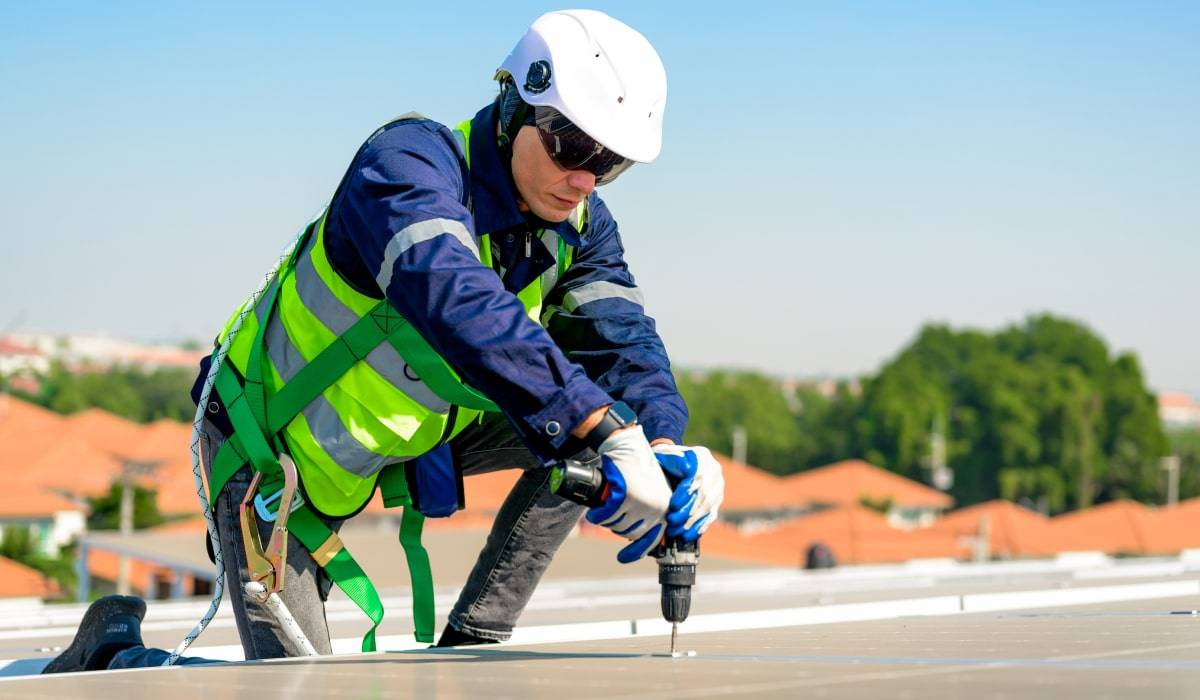Flat Roof Fixes That Don’t Fall Flat
Flat roofs may look simple, but when problems pop up, they can quickly turn your building into a very expensive swimming pool. Whether you own a commercial building or a home with a low-slope roof, knowing how to spot issues early—and fix them properly—can save you from water damage, mold, and major headaches.
Let’s dive into the most common flat roof problems, how to catch them before they escalate, and why timely repairs are the key to avoiding those “pool parties you didn’t plan.”
Why Flat Roofs Are Tricky (But Totally Fixable)
Flat roofs aren’t actually flat—they have a slight pitch to help water drain. But unlike sloped roofs that shed water quickly, flat roofs tend to hold water longer, making them more vulnerable to:
- Ponding water
- Cracks in the membrane
- UV damage
- Drain clogs
- Leaks near HVAC units or roof penetrations
Left unchecked, these issues can lead to insulation damage, interior leaks, mold growth, and structural problems. Not exactly the kind of indoor water feature you were hoping for.
How to Spot Flat Roof Problems Early
1. Ponding Water
After a rainstorm, does water linger in puddles for more than 48 hours? That’s a red flag. Prolonged ponding accelerates roof deterioration and can lead to leaks.
2. Bubbling or Blistering
These raised areas in the membrane mean trapped moisture or air. They’re often signs of poor adhesion and can eventually burst, exposing your roof to the elements.
3. Cracks, Splits, or Tears
Flat roofs expand and contract with temperature swings. Over time, this movement causes the membrane to crack—especially around flashing or seams.
4. Stains or Water Marks Inside
If you see discoloration on ceilings or walls, the leak has already made its way inside. That means it’s been brewing on the roof for a while.
5. Clogged or Rusted Drains
If your roof drainage system isn’t working, water has nowhere to go. This not only causes ponding but also adds weight and stress to the structure.
Why Timely Repairs Matter
Flat roof problems are like slow leaks in your wallet. The longer you wait, the more damage you’ll pay for—both inside and out. Catching and fixing issues early can:
- Prevent costly structural repairs
- Avoid damage to insulation and interior finishes
- Extend the lifespan of your roof
- Maintain energy efficiency
- Protect your tenants, equipment, or family
And here’s the thing—flat roof issues rarely go away on their own. Even a small crack or seam separation can grow quickly with just one storm or freeze-thaw cycle.
Should You Repair or Replace?
It depends on the age and condition of your roof. At Harford Roofing & Exteriors, we typically recommend:
- Repair: If your flat roof is under 10–12 years old and the damage is localized
- Replace: If the membrane is near the end of its life, or the damage is widespread
We’ll provide a full inspection, photos, and a straightforward assessment so you can make an informed choice—no pressure, no guesswork.
Pro Tip: Schedule Seasonal Flat Roof Inspections
At a minimum, your flat roof should be inspected twice a year—spring and fall—and after major storms. Preventive maintenance is far more affordable than emergency repairs.
Ready to Ditch the Drips?
If your flat roof is showing signs of wear, don’t wait for water to show up in your conference room or living room. At Harford Roofing & Exteriors, we’ve seen—and fixed—it all. Our experienced team will find the source of the problem, explain your options clearly, and get you back to watertight in no time.
Flat roof headaches don’t have to be inevitable. With the right attention and expertise, your roof can stay flat—and dry—for decades to come.
Call Harford Roofing & Exteriors today at 443-292-6020
Visit www.harfordexteriors.com to schedule a flat roof inspection.

